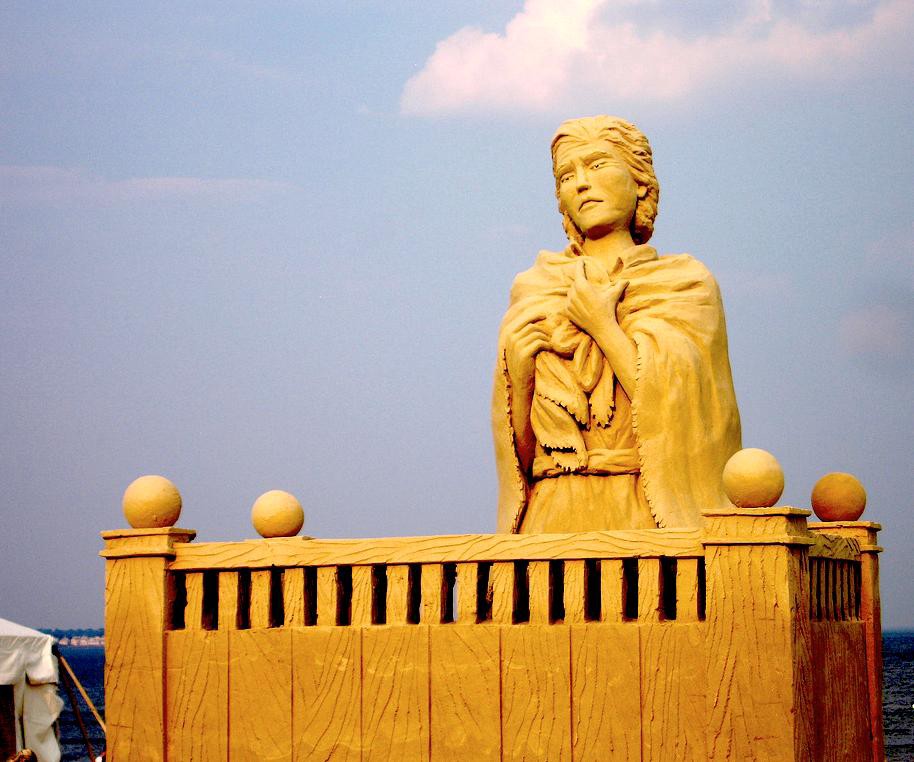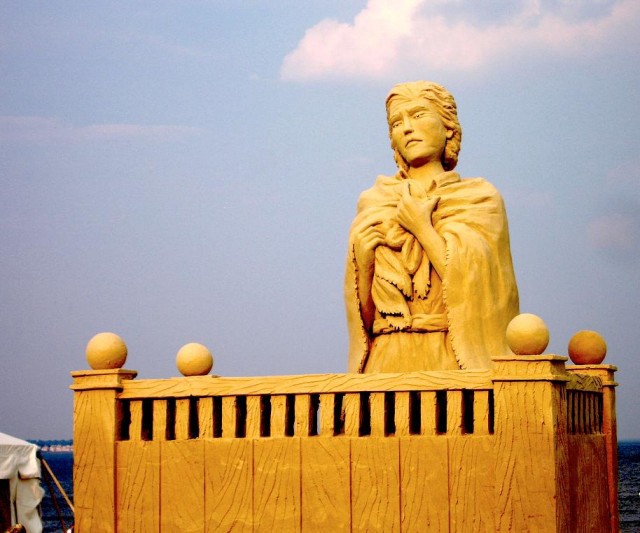Widow’s Walks, Whaling Wives and the End of the Good Victorian Woman


Lapham’s Quarterly has an amazing essay up about the lonely Victorian suggestiveness of the widow’s walk, and the salty, businesslike sea-wife reality underneath it. Novelist Amy Brill evokes this world beautifully:
They are unmistakable, ubiquitous fixtures of northeastern seaboard architecture, integral to the Nantucket skyline. The widow’s walks are small platforms, odd architectural appendages which protrude from the roof, bounded by a railing, allowing for clear views of the surrounding buildings, streets, and sometimes the horizon. The glum name comes from the iconic whaling wife of the nineteenth century who spent countless hours of her life perched upon it, gazing toward said horizon, awaiting the flag of her husband’s ship.
She’d been waiting twelve or eighteen months, if she lived in the late eighteenth century, or up to four years if her time in New Bedford or Nantucket occurred in the mid-1850s, as whales were fished out of waters close to home and her husband, brothers, and sons were forced to travel to distant whaling grounds in search of whales to slaughter and drain of their oil so that homes and businesses throughout the newly expanding states and territories might be brightly lit.
She is easy to conjure, this Victorian-era whaling wife, her brood of fair, freckled children safely tucked into their beds like little goslings, lulled to sleep by her mellifluous voice. Pictured with her flowing gown, her rosy cheeks, her delicate vigor, she must also be hearty, as she comes from generations of seafaring New England stock, but not so robust as to compromise her feminine charm. She must be practical, stretching staples and stringing out currency for as long as she needs to, but stoic and creative in the face of deprivation. She must make do in her husband’s absence, but never lose sight of her place in the household: second in command. At her husband’s service.
But! Ladies ain’t got time for all that vaguely consumptive longing! Here’s what was actually happening, a scene pieced together from old letters:
By daybreak she’s in the kitchen, lighting the lamps, stirring together graham flour and milk, churning butter, wringing out wash. By midmorning she’s given the youngest children their lessons, sent the older ones off to school, and has visited at the dry good shops, milliners, bakery… By afternoon she’s gone to purchase something for the barn or the table or the store, and set by some medicines or knitted extra stockings to send to sea. At sunset, she’s seen about some acreage her husband — or herself — is interested in selling or buying… By sundown she might have purchased insurance for her husband’s share of his ship’s cargo or written to her husband about the market price for rum.
The most interesting part of the piece, which I have already excerpted too much of because the writing is so lovely, comes when Brill finds seeds of the progressive movement in the community of sea wives, who asserted a new lifestyle while still having to pay lip service to old ideals. French immigrant J. Hector St. John de Crévecoeur wrote that the whaling wives of Nantucket were of “a rank superior,” and Brill wonders if these women would have outwardly, or even inwardly, agreed:
The whaling wife is at the same time everything a good Victorian wife isn’t: shrewd, strong, sometimes imperious, her husband’s partner in everything from asset management to home improvement. A whaling wife in 1750 might have agreed easily with Crèvecoeur’s assessment, but a century later, she would have been more likely to demur, in the sappiest, most vaporous terms imaginable, even as she went on thrashing the barley and buying the livestock. Who was this ideal Victorian wife supposed to be? What was this ideal? She certainly wasn’t a sun-weathered, calloused, shrewd businesswoman with intellectual and physical desires on par with her seagoing husband. The Victorian woman was governed by her emotions, physically weak, genteel, and, especially, primarily, family-oriented.
Yet at the same time these women read Margaret Fuller and lived with fierce independence, “explor[ing] an entirely new idea of themselves and who they might become.”
[LQ]
Photo credit Matt Chan/flickr